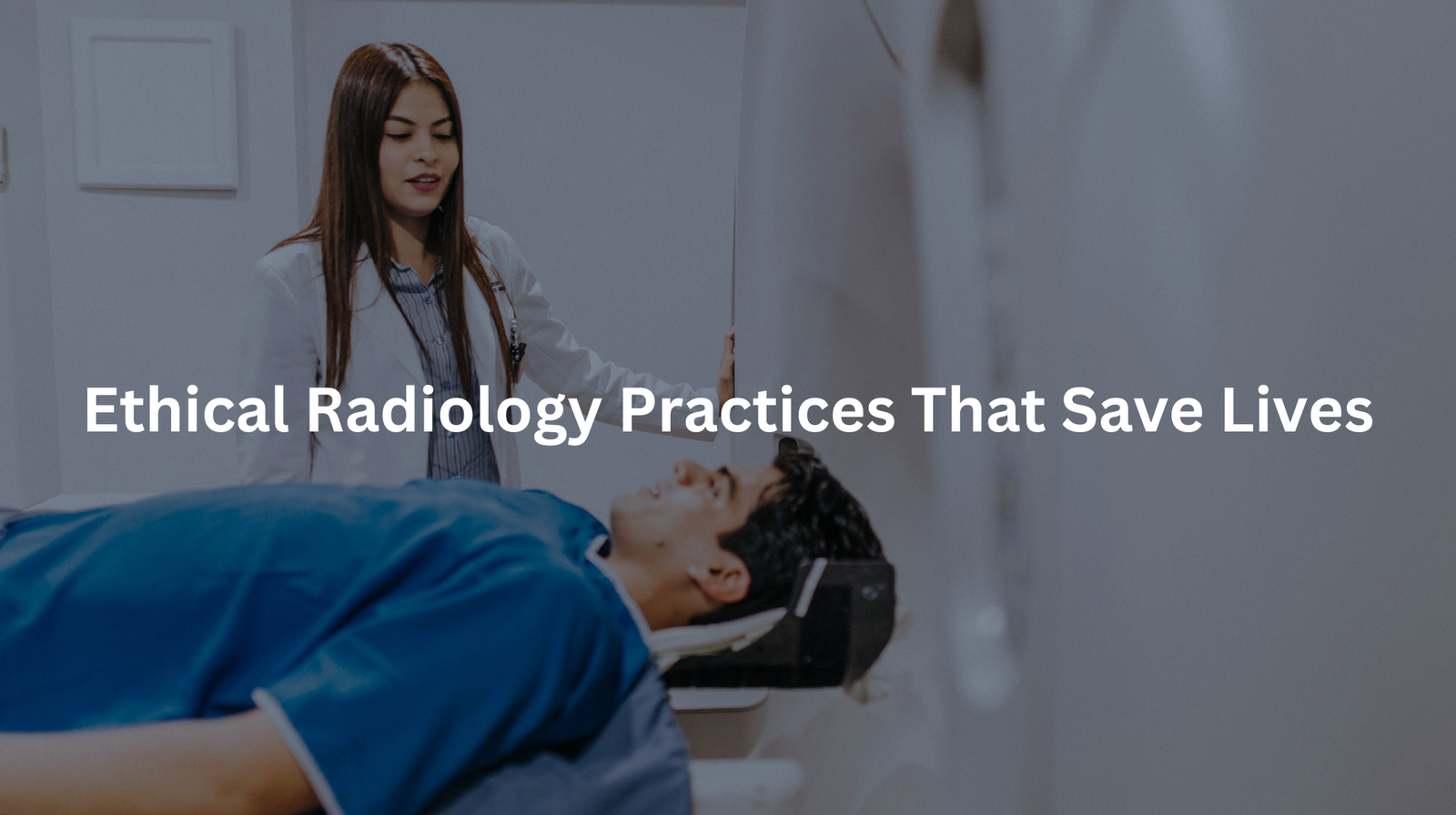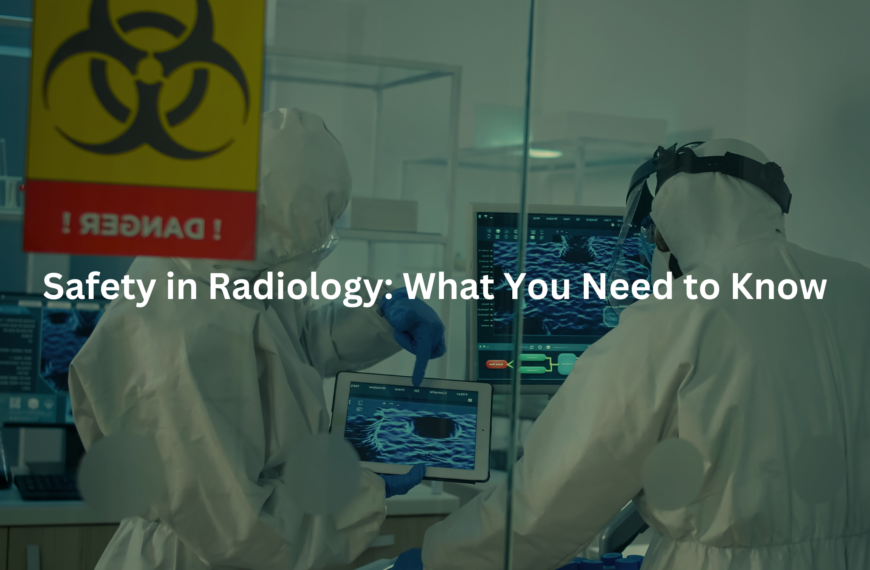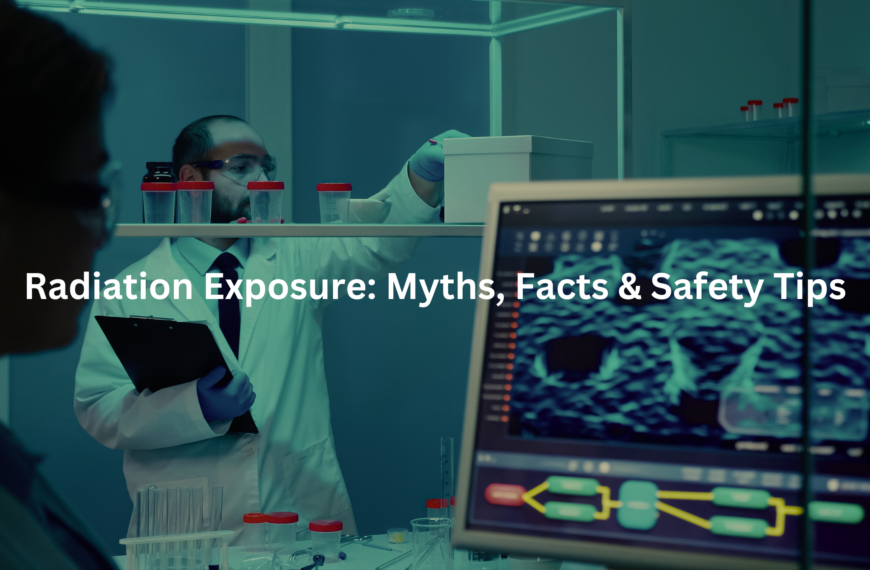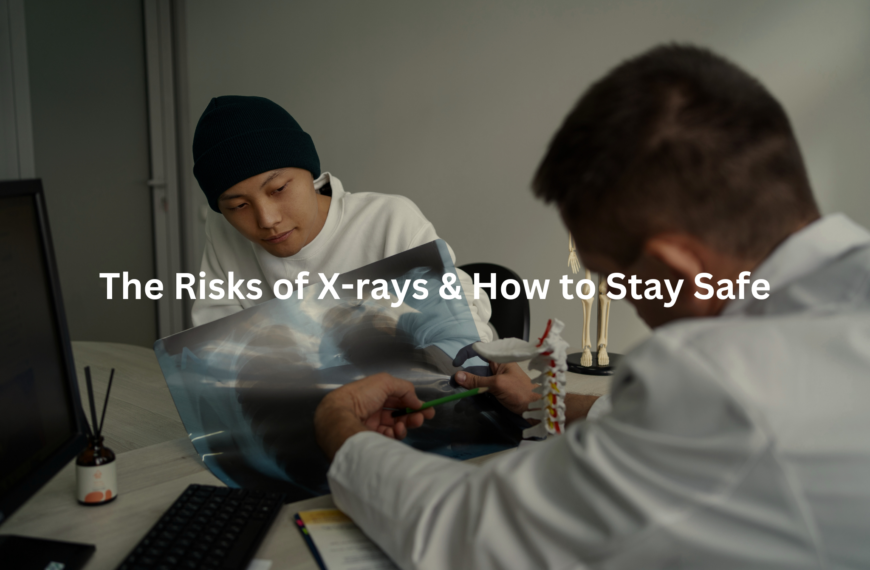Ethical radiology practices are essential for patient safety, diagnostic accuracy, and professional integrity—learn the key principles every radiologist must follow.
Ethical radiology practices shape how doctors use imaging (X-rays, CT scans, MRIs) without harming patients. Machines see inside the body, but they also expose tissue to radiation—measured in millisieverts (mSv). Too much? It increases cancer risk.
Patient consent matters. No scan should happen without explaining risks (even small ones) and benefits. Informed patients make better choices. Errors? They happen. AI helps, but radiologists still misread about 3-5% of scans. Oversight—double-checking findings, peer reviews—reduces mistakes.
Safer imaging means lower doses, clear communication, and accountability. Technology advances, but ethics stay constant. Know the risks, ask questions, demand transparency.
Key Takeaway
- Patient consent is very important for ethical radiology.
- Radiologists must always keep patients’ safety in mind.
- Technology should always be used responsibly and ethically.
What Are Ethical Radiology Practices?
A radiologist stands in a dimly lit room, staring at an X-ray. It’s a routine moment, but behind it lies a web of ethical decisions. Every scan, every image, every adjustment of the machine carries weight. Ethical radiology practices set the rules—guidelines ensuring that each decision prioritises patient welfare, safety, and trust.
Patients put their health in a radiologist’s hands, expecting precision and care. That’s why ethical standards exist. They cover everything from obtaining informed consent to minimising radiation exposure. The Royal Australian and New Zealand College of Radiologists (RANZCR) and the Australian Radiation Protection and Nuclear Safety Agency (ARPANSA) set strict protocols. These aren’t just formalities—they are essential safeguards.(1)
Consider radiation. It’s powerful. Necessary, but with risks. Ethical radiologists don’t overuse it. They apply the ALARA principle (As Low As Reasonably Achievable), balancing diagnostic value with safety. AI now assists in imaging, but reliance on technology must be tempered with caution. Machines don’t replace judgment. Radiologists remain accountable.
Medical imaging is more than science—it’s trust, responsibility, and ethical vigilance. Every scan tells a story, but how that story is captured and interpreted must always be fair, safe, and respectful.
Why Patient Consent Is Important
Credits : Clover Learning
A patient lies on a cold table, staring at the ceiling while a machine hums to life. They trust the process—but did they truly agree to it? Ethical radiology hinges on informed consent. Without it, even the most routine scan becomes questionable.
Informed consent isn’t just a signature on a form. It’s a conversation. A radiologist (or referring doctor) must explain the procedure, potential risks, and alternatives. The patient must understand and agree—not out of obligation, but with full awareness. RANZCR mandates this process, ensuring patients maintain control over their medical choices.
There are exceptions. Emergencies sometimes override consent requirements. A critically injured patient may need an immediate scan to guide life-saving treatment. In such cases, radiologists follow ethical frameworks, prioritising patient welfare while minimising harm.
Without consent, medical imaging becomes intrusive. Ethical radiologists respect autonomy, ensuring every scan is a choice, not an imposition.
Keeping Radiation Exposure Low
A patient enters the room. Another scan. Ethical radiologists pause, considering—Is this necessary? Will it change treatment? Can a lower-dose option work?
ARPANSA enforces ALARA (As Low As Reasonably Achievable). It’s a balance. Higher doses improve image clarity but increase risks—cancer, tissue damage, genetic mutations. Ethical practice means using only the radiation needed for an accurate diagnosis.
Children and pregnant patients need extra caution. Their tissues are highly sensitive to ionising radiation. Paediatric protocols reduce exposure (adjusted mAs, lower kVp), and pregnant patients might need alternative imaging—MRI, ultrasound—when clinically appropriate.
Unnecessary scans aren’t just risky; they’re unethical. Radiologists must justify every exposure, basing decisions on clinical necessity—not convenience, habit, or patient pressure.
Techniques help keep doses low:
- Automated exposure control (AEC) adjusts parameters in real time.
- Iterative reconstruction enhances image quality at lower doses.
- Shielding (lead aprons, thyroid collars) reduces scatter.
Every scan is a choice. Ethical radiologists choose wisely, protecting patients without compromising diagnostic accuracy.
Ethical Use of Technology
A computer analyses a scan in seconds. AI flags an anomaly. Impressive—but is it right? Technology in radiology is evolving fast, bringing ethical challenges.
AI improves accuracy and efficiency. It detects fractures, tumours, and microcalcifications invisible to human eyes. But AI isn’t perfect. Bias exists in algorithms, often reflecting gaps in training data. RANZCR warns against overreliance, stressing that AI should support, not replace, human expertise.
Ethical radiologists verify AI findings. They cross-check results, question anomalies, and ensure AI complements clinical judgment—not dictates it. Transparency matters. Patients must know when AI plays a role in their diagnosis.
Ethical concerns extend beyond diagnosis:
- Automated reporting raises liability questions (who’s responsible for errors?).
- AI-assisted triage may prioritise efficiency over medical urgency.
- Black-box algorithms obscure decision-making, reducing trust.
New technology isn’t inherently ethical. Ethical radiologists ensure it serves patient care—not corporate interests or operational shortcuts.
Professional Accountability and Continuous Learning
A radiologist reviews a scan. It’s complex. A rare condition, maybe? Ethical practice means knowing when to double-check, consult, or study further.
Medicine evolves. Radiologists must keep up. Continuing professional development (CPD) isn’t optional—it’s a duty. RANZCR mandates ongoing education, ensuring radiologists refine skills, adopt new techniques, and uphold ethical standards.(2)
Mistakes happen. Ethical radiologists acknowledge errors, report them, and take corrective steps. Medical boards enforce accountability, ensuring practitioners meet professional and ethical expectations.
Learning never stops:
- Peer reviews improve diagnostic accuracy.
- Case studies expose radiologists to rare pathologies.
- Multidisciplinary meetings enhance collaboration with clinicians.
No one knows everything. Ethical radiologists embrace learning, ensuring patients get the best, most informed care possible.
Respect for Diversity
A patient hesitates before a scan. Their body stiffens. Eyes dart to the door. Cultural beliefs make them wary. Ethical radiologists recognise this. Medicine isn’t one-size-fits-all.
Australia’s diverse population means radiologists encounter a spectrum of beliefs, languages, and expectations. Some cultures prioritise modesty, preferring same-gender providers. Others distrust medical imaging—maybe from past mistreatment, maybe from misinformation (radiation fears are common). Ethical practice isn’t just following guidelines. It’s adapting.
Listening matters. A simple pause—allowing patients to voice concerns—can change everything. Clear explanations in a patient’s preferred language help (interpreters bridge gaps when needed). Personal boundaries must be respected. Some patients refuse certain scans due to religious beliefs. Some need a family member present. Hospitals offer cultural competency training, but true respect comes from awareness, not a checklist.
Patients aren’t just cases. They’re individuals with histories, fears, and needs. Ethical radiologists ensure care aligns with identity—not just protocols.
Ethical Decision-Making in Difficult Situations
A routine scan. Nothing urgent. But there it is—something unexpected. A tumour? An aneurysm? The patient came in for back pain. Now what?
Ethical dilemmas in radiology happen daily. Some choices are clear-cut. Others? Not so much. The four-principle approach—autonomy, beneficence, non-maleficence, and justice—guides tough calls. But even with a framework, answers aren’t easy.
Incidental findings complicate things. Some are harmless (benign cysts, minor calcifications). Others demand follow-up. A mass on a routine chest X-ray can’t be ignored. But should the radiologist inform the patient directly? Or defer to the referring doctor? Breaking bad news isn’t a radiologist’s usual role. Still, ethical practice means ensuring no finding gets lost in the system.
Every decision carries weight. Ethical radiologists tread carefully—balancing urgency, responsibility, and patient rights.
Patient Advocacy and Rights
A patient shifts uncomfortably. Their question dismissed. Their concerns brushed aside. Ethical radiologists don’t let that happen. Advocacy isn’t an extra—it’s the job.
Patients have rights—information, respect, quality care. Ethical radiologists turn those rights into action. They explain procedures, answer questions, address worries. A patient doesn’t understand why contrast dye is needed? A proper explanation makes all the difference.
RANZCR (Royal Australian and New Zealand College of Radiologists) promotes patient-centred care. That means treating people, not just conditions. If a scan request seems unnecessary—or worse, unsafe—radiologists push back. If a patient is confused, they clarify. Medical jargon helps doctors, not patients. Simple, direct language builds trust.
Trust in radiology isn’t automatic. It’s earned. Ethical radiologists ensure patients are heard, understood, and never left in the dark.
FAQ
What Are Ethical Radiology Practices?
Ethical radiology is all about keeping patients safe and happy. Radiologists work hard to provide quality patient care by following important rules. They always ask for patient consent before doing any tests. Their main job is to protect people’s health while being fair and honest. This means they try to do the least harm possible, respect patient rights, and make sure everyone gets good medical treatment.
How Do Radiologists Keep Patients Informed and Safe?
Patient welfare is super important in radiology. Doctors explain everything clearly before taking any images. They talk about why the test is needed, how much radiation is involved, and what will happen. Informed consent means patients understand and agree to the test. Radiologists work to safeguard patient dignity and make sure everyone feels comfortable and respected during medical tests.
What Should Patients Know About Radiation?
Radiological safety is a big deal. Doctors always try to use the least amount of radiation possible. They carefully check if a test is really needed and how it might help the patient. Minimising harm is a key part of their job. They use special guidelines to make sure patients get the right care without unnecessary risks.
How Do Radiologists Handle Tricky Situations?
Sometimes, radiologists face tough choices. They use collaborative decision-making to solve problems. This means they work together and think carefully about what’s best for the patient. They try to be fair, reduce any possible bias, and make sure everyone gets equal healthcare. Their goal is to be honest and put the patient first.
What About Technology in Radiology?
Technology is changing how doctors do their work. Radiologists use new tools carefully and ethically. They make sure that any new technology helps patients and doesn’t cause problems. This means being careful with things like artificial intelligence and always putting patient care first.
How Do Radiologists Help Everyone Get Fair Care?
Fairness is super important in healthcare. Radiologists work hard to help all patients, no matter who they are. They learn about different cultures and try to understand each patient’s unique needs. They want to make sure everyone gets the best possible care and feels respected.
What Are the Most Important Rules for Radiologists?
Radiologists have big responsibilities. They must always:
- Tell the truth
- Protect patient privacy
- Ask for permission before tests
- Make sure patients understand everything
- Put patient safety first
- Be fair and kind to everyone
Their job is to help people stay healthy while treating everyone with respect and care.
Conclusion
The X-ray machine hums like a tired bee, its mechanical eye seeing what skin hides. Ethical radiology ain’t just fancy words—it’s shields and promises. A patient’s body (soft tissue, dense bone) gets measured in millisieverts, the dose scribbled down like a secret. Too much radiation burns, too little misses the mark.
Good radiologists don’t just read scans. They ask, they listen. Consent forms rustle, voices thick with accents or fear. A bloke from Darwin might need slower words, a mum from Sydney might clutch her kid tighter. Trust don’t come free.
Tech changes, rules don’t. Keep learning, keep the doses low. And if you’re ever the one on the table? Ask questions. Make ‘em explain. Your body, their job.
Related Articles
- https://radiologyscan.com.au/radiology-ethical-practices/
- https://radiologyscan.com.au/safety-in-radiology/
- https://radiologyscan.com.au/contrast-dye-safety/
References
- https://pmc.ncbi.nlm.nih.gov/articles/PMC9291743/
- https://healthmanagement.org/c/it/issuearticle/profile-of-the-royal-australian-and-new-zealand-college-of-radiologists




